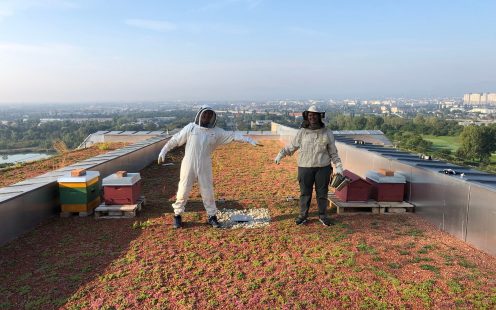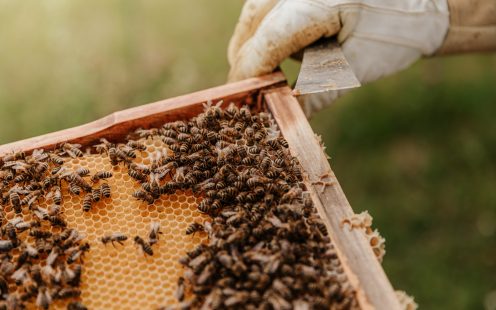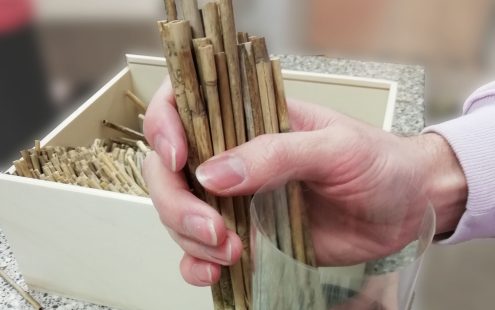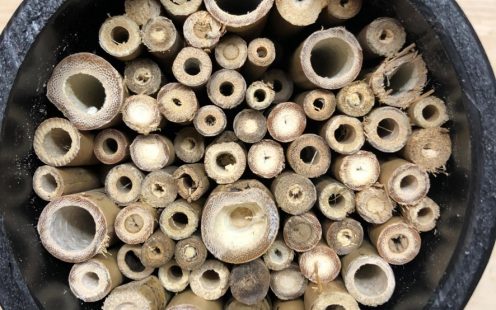Sustainable Bee-ldings Solutions: The Story of Pipelife Honey
Two years ago, Pipelife set up four beehives on the rooftops of the Wienerberger House. The goal was to take part in supporting biodiversity in the Wienerberg nature preserve, located nearby the headquarters. Since then, our bee community has been thriving. Currently, there are ten hives on the rooftop, providing a home to hundreds of thousands of bees. Now, it is time to celebrate our first honey harvest while promoting biodiversity even further.
.jpg)
Bees and Cities: Helping Each Other
The vital role of bees in agricultural production is well known. However, as highly efficient pollinators, bees also take care of ecosystems, especially when it comes to preserving their ecological balance. 90% of all plants require cross-pollination — these include common tree species like linden, maples and willows, as well as most species of wildflowers. With many cities currently seeking ways to bring back biodiversity to their developed areas, bees are crucial in achieving this goal.
Urban beekeeping is not a new concept. Major European cities such as London, Paris, Istanbul and others have been hosting thousands of bee colonies for years now. Vienna, with its many parks, flowerbeds and trees, has become another buzzing bee city providing home to more than 6,000 beehives.
Even more, urban bees are generally healthier than rural bee communities. While such findings might seem counterintuitive, modern monoculture agriculture often means limited plant diversity and higher exposure to pesticides. Both factors have been linked to bee population decline, highlighting urban apiculture as a healthier alternative. Pipelife’s bee colonies live nearby the Wienerberg nature reserve, which encompasses 117 hectares of a protected area. Boasting a high variety of plant species, the reserve relies on pollinators to preserve its biodiversity while providing a perfect environment for them.
.jpg)
Honey Packaging That Promotes Biodiversity
Beekeeping on our HQ roof contributes to sustainable development in the surrounding area, which is a key priority to the Wienerberger Group. The bees of the Wienerberger House are taken care by Kathrin Hischenhuber, Assistant to SVP Business Support and Controlling Operations, and David Graham, Health and Safety Manager at Pipelife. Both colleagues are experienced beekeepers and were thrilled to share their expertise. Last summer, their efforts were generously rewarded as Pipelife collected 125 jars of honey.
However, our commitment did not stop there. We believe that promoting biodiversity and helping bees should be as enjoyable as the honey they produce — thus, the idea of honey jar packaging that would serve as a bee hotel was born.
Bee hotels are a great way to attract pollinators. They provide refuge for solitary wild bees who often find there a safe space to hide from predators or build a nest. Other insect species, such as wasps and ladybugs, are commonly found in bee hotels, too. As setting up a bee hotel in a garden or flowerbed is quick and does not require specific skills, everyone can try their hand at wild beekeeping.
.jpg)
.jpg)
Sustainability at Every Step: Putting Our Bee Hotels Together
We chose customized Pipelife PE (polyethylene) pipe as the best material to safely shelter the future dwellers of our bee hotels. PE is highly durable and resistant to weather extremes, providing protection for the hotel and insects living there. Moreover, PE pipes are 100% recyclable.
Next, we opted for organic reed as the filling material, as it has excellent insulation, anti-rot and antifungal qualities. Such a combo makes reed a perfect home for various insect species. For Pipelife’s bee hotels, the reed was sourced near the east bank of Lake Neusiedl in Burgenland by the Sumalowitsch family.
Each of the bee hotels was assembled with the utmost care. This was possible thanks to the workshops organized by the Emmausgemeinschaft St. Pölten — an association working on the inclusion of socially disadvantaged people. Their attentiveness and expertise in handicrafts were invaluable for such a task.
In addition to organic reed and a honey jar, a small informational leaflet was put in every hotel, including step-by-step instructions and tips on proper setup. This way, every hotel owner can be sure that critters who check in will thoroughly enjoy their stay.
.jpg)
.jpg)
The Next Chapter: Channel Your Inner Beekeeper
Pipelife’s Bee Hotels will be given as gifts to our partners, clients and employees. After the delicious honey from the Wienerberg reserve has been enjoyed, the packaging will start its second life, bringing more biodiversity to balconies, gardens and flowerbeds around Europe.
Find out more about our biodiversity initiatives
Get in Touch
Please choose your preferred way to get in contact with us. We will get back to you as soon as possible.
Fill our form